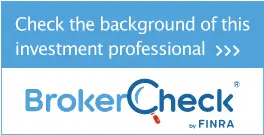Target Date Funds—Does One Size Really Fit All?
If you have ever opened a brokerage account with an advisor, you know the first step is gathering information to determine the risk profile and appropriate investment allocation for the individual. In order to determine the appropriate allocation for a client, financial advisors will inquire about income level, savings rate, net worth, time horizon, spending needs, investment knowledge and most importantly risk tolerance. Based on this information the advisor will recommend a tailored allocation to help individuals reach their objectives while maintaining an appropriate risk level to help ensure clients remain invested through market downturns.
However, when it comes to retirement and target date funds (TDFs), all individuals within an organization have historically been placed in the same allocation and glidepath regardless of their financial condition or risk tolerance. Plan sponsors typically select the allocation and glidepath based on the average participant at the organization. This would be like fitting shoes for a track team based on the average foot size of the team. Some team members would fall out of their shoes while others would not be able to put them on their feet.
An ill-fitting TDF brings significantly higher consequences than an uncomfortable pair of shoes. TDF misfit risk¹ can lead to participants not being prepared for retirement. If a participant is not saving enough for retirement and they are placed in a conservative TDF glidepath, they likely will not achieve an adequate income replacement ratio by retirement. Participants that have high account balances and deferral rates are exposed to unnecessary risk if placed in
aggressive TDF solutions. Additionally, if a participant with a low risk tolerance is placed in an aggressive allocation, misfit risk can lead to participants pulling their money out of the market at the wrong time. In 2008, some aggressive TDFs with a 2010 target retirement date were down over 40 percent.² What do you think a participant two years from retirement with a low risk tolerance would do if they saw their account balance drop 40 percent? Unfortunately, many would pull their money out at exactly the wrong time and not benefit from the recovery in the markets.
Fortunately, plan sponsors no longer have to choose one glidepath for all participants in their organization. Custom solutions that include multiple glidepaths (conservative, moderate and aggressive) are now available to enable each individual participant to select a glidepath that suits their own financial situation and risk tolerance.
Questions?
Michael Del Re III, AIF®, ChFC®, REBC®
mjdelreiii@fnlonline.com
203.878.8194
fnlonline.com
About Financial Network Limited
FNL was founded to provide personalized investment strategies for individuals and families, and distinctive employee benefit programs for employers. For more than 25 years, we have thrived as an independent, family-owned and operated firm with a consistent mission – to provide comprehensive and innovative client solutions with the highest levels of professionalism and integrity.
DISCLAIMER: Diversification and asset allocation strategies do not assure profit or protect against loss. Past performance is no guarantee of future results. Investing involves risk. Depending on the types of investments, there may be varying degrees of risk. Investors should be prepared to bear loss, including loss of principal.
¹TDF misfit risk occurs when the glidepath does not fit the participant’s actual savings rate.
²Morningstar, Inc., Open End Funds, Category “US OE Target Date 2000-2010” containing “2010” in fund name, calendar year returns 2006-2010.
